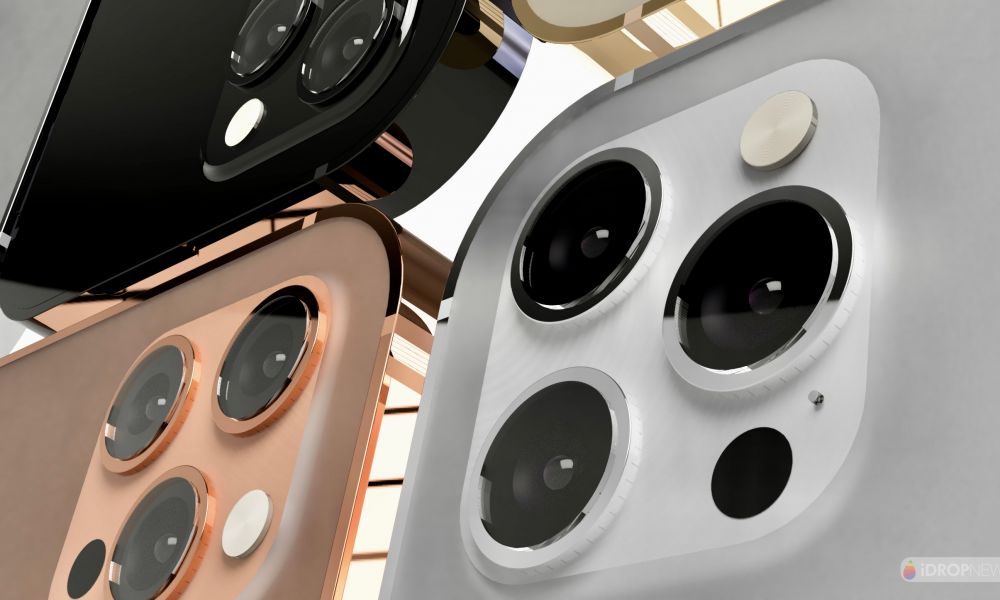The ‘iPhone 13 Pro Max’ May Still Have the Best Camera in the Lineup
 Credit: iDrop News / Wilson Nicklaus
Credit: iDrop News / Wilson NicklausToggle Dark Mode
When Apple unveiled its iPhone 12 lineup last fall, the largest iPhone 12 Pro Max had an extra surprise up its sleeve — a noticeably better camera system than its smaller 6.1-inch sibling — and now it looks like that may have been the beginning of a trend.
Until the iPhone 12, Apple’s “Max” models were always functionally identical to their non-max counterparts, differing only in size and slightly better battery life that was an obvious benefit of having more room to pack in a larger cell. However, all the other features and components, from the screen quality to the camera system were identical.
That all changes with the iPhone 12 Pro Max, however, which saw a return in concept to something that Apple hasn’t done since the iPhone 8 Plus back in 2017 — reserving the best camera system for the larger and more expensive models.
In the case of the older “Plus” model iPhones, this was most apparent in the dual-camera system that first debuted with the iPhone 7 Plus, although the iPhone 6 Plus and iPhone 6s Plus also technically differed in a more subtle way — they were the only models to feature optical image stabilization on the single-lens camera.
For the iPhone 7 and iPhone 8 lineups, however, not only did users of the Plus models gain an extra 2X “telephoto” lens, but they also got to take advantage of the cool new Portrait Mode feature in iOS 10.1. Although Apple eventually figured out how to do this with only one lens on the iPhone XR, at least in a somewhat limited fashion, back in 2016 it required two lenses to pull off.
In a sense, Apple set the expectation with the Plus models that they would always offer a little something extra, which was arguably why the name “Plus” was also appropriate. However, Apple turned that on its ear when it released the iPhone XS Max back in 2018, which was functionally identical to the standard iPhone XS.
Then, as if to prove that wasn’t an aberration, it did the same thing the following year with the iPhone 11 Pro and iPhone 11 Pro Max.
Enter the iPhone 12 Pro Max
As a result of this, nobody saw it coming when the iPhone 12 Pro Max landed last fall with noticeably better camera improvements over to the iPhone 12 Pro.
In this case, the largest iPhone didn’t gain any visible camera differences beyond a larger bump, but inside it packed in a 47 percent larger image sensor, significantly improving low-light photography, along with a 2.5X “telephoto” lens — the first time any iPhone has bumped that beyond the now-standard 2X focal length.
Of course, like the larger “Plus” iPhones that came before, the reality is that the 6.7-inch iPhone 12 Pro Max simply has more room to pack in features. A bigger sensor naturally requires more space in which to place it, and the 6.1-inch iPhone 12 Pro just likely didn’t have room for it. At least some analysts also believe that the 2.5X lens was simply a result of the larger sensor. As John Gruber explains over at Daring Fireball, the larger sensor needed a bigger standard 1X lens to cover the whole thing. This meant that if Apple wanted to keep everything nice and symmetrical it needed to extend the other two lenses as well. At that point, it made perfect sense to bump the optical zoom factor to 2.5X.
Along the same lines, the iPhone 12 Pro Max also gained a new “sensor-shift” optical image stabilization feature, which stabilizes the sensor rather than the lens, providing even better stability for hihi-frequency vibrations, such as you’d find in a moving vehicle. Again, this is likely something that the smaller iPhone didn’t have any room for, in much the same way optical image stabilization originally only came to the iPhone 6 Plus and not the iPhone 6 back in 2014.
Coming to the ‘iPhone 13 Pro Max’
Now it looks like Apple may be planning to repeat this trend with this year’s largest “Max” iPhone model, packing in a larger f/1.5 aperture for the main lens.
According to veteran analyst Ming-Chi Kuo, Apple’s lens suppliers have been producing these larger-aperture lenses to cover the wide-angle imaging model on the so-called “iPhone 13 Pro Max.”
This would make it the largest aperture yet used on an iPhone, and combined with the larger sensor that Apple is already using in the iPhone 12 Pro Max, would result in some pretty incredible nighttime photography features.
Kuo notes that all other “iPhone 13” models will be sticking with the current f/1.6 lenses, although he previously shared last fall that he expects the ultra-wide lens to get a fairly bigger boost from its current f/2.4 aperture to f/1.8, effectively letting in twice as much light. It’s also expected to get an increase to a six-element lens module, and gain autofocus for the first time.
In the case of the main lens, however, the difference between f/1.5 and f/1.6 seems so negligible that it really makes us wonder if Apple has something else up its sleeve. While every bit counts when it comes to low-light photography, it’s possible that this may also be combined with new A15-based computational photography features that could make even more of the wider aperture than mere optics would suggest.
[The information provided in this article has NOT been confirmed by Apple and may be speculation. Provided details may not be factual. Take all rumors, tech or otherwise, with a grain of salt.]






